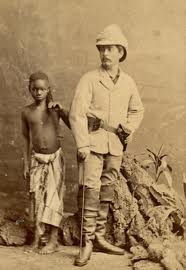From Wikipedia,
2.25-litre diesel (Engine Code 10J)[edit]
The Series II Land Rover was a sales success, but there was still room for improvements. In 1962 the slightly altered Series IIA was launched. As well as some suspension and steering system changes, the biggest update was an improved diesel engine.[24] This shared many parts with its petrol-fuelled sibling, including the block, valve gear, cooling systems and lubrication systems.[25] A forged crankshaft was used for added strength, and different pistons were needed.[26] The cylinder head used the same basic casting, but was very different internally, being in essence an updated version of that used on the original 2-litre engine, to which the new diesel bore a strong external resemblance. Like the 2.25-litre petrol, the 2.25-litre diesel was a dry-liner design. It was built on the same production line as the petrol engine and the flexibility of the basic design was much in evidence- for example, where the diesel engines had their fuel injector pumps, the petrol engine had its distributor fitted. Although it offered a modest improvement in power and a useful jump in torque, the main benefit of the new diesel engine was that it was much quieter and more efficient than the older unit.[27] It also proved to be much more reliable in service.[12] Like the petrol engine, the diesel was upgraded to a 5-bearing crankshaft in 1980. The engine was fitted to the Austin FX4 Black Cab between 1982 and 1985. FX4s fitted with the engine were designated 'FX4R' ('R' for 'Rover'). In this application the engine gained a reputation for very short service life and unreliability. This was caused by the significantly greater times spent at idle speed in the Black Cab than in the Land Rover. Solihull engineers had warned Carbodies, builders of the FX4R that this would cause problems as at idle speed the engine's oil pressure dropped, causing the automatic tensioner unit for the timing chain to not operate fully. At the high number of hours spent at idle speed (taxi drivers tended to leave the engines idling for long period whilst waiting for passengers or when off-duty as well as all the time spent in stationary traffic in London) this caused the timing chains to stretch, causing incorrect fuel injection timing which greatly reduced engine life. The 10J engine was also adapted into a marine engine by Mercury of the USA and sold under the Mercruiser 165 name.[11][28]
Layout: 4-cylinder, in-line
Block/head: Cast iron/cast iron
Valves: OHV, chain drive camshaft, push-rod operated
Capacity: 2,286 cc (139.5 cu in)
Bore × stroke: 90.47 mm × 88.9 mm (3.562 in × 3.50 in)
Compression ratio: 23:1
Fuel injection: CAV DPA rotary pump and CAV Pintaux injectors
Power: 62 hp (46 kW) @ 4,000 rpm
Torque: 103 lbf·ft (140 N·m) @ 1,800 rpm
Production: 1962–1984
Used in: Land Rover Series II, Series III, and One Ten; also Carbodies FX4 (also called Austin FX4) and sold as a Mercury marine engine. There is also evidence of the 10J engine being offered as a conversion for Volga saloon cars by a Belgium-based company.



